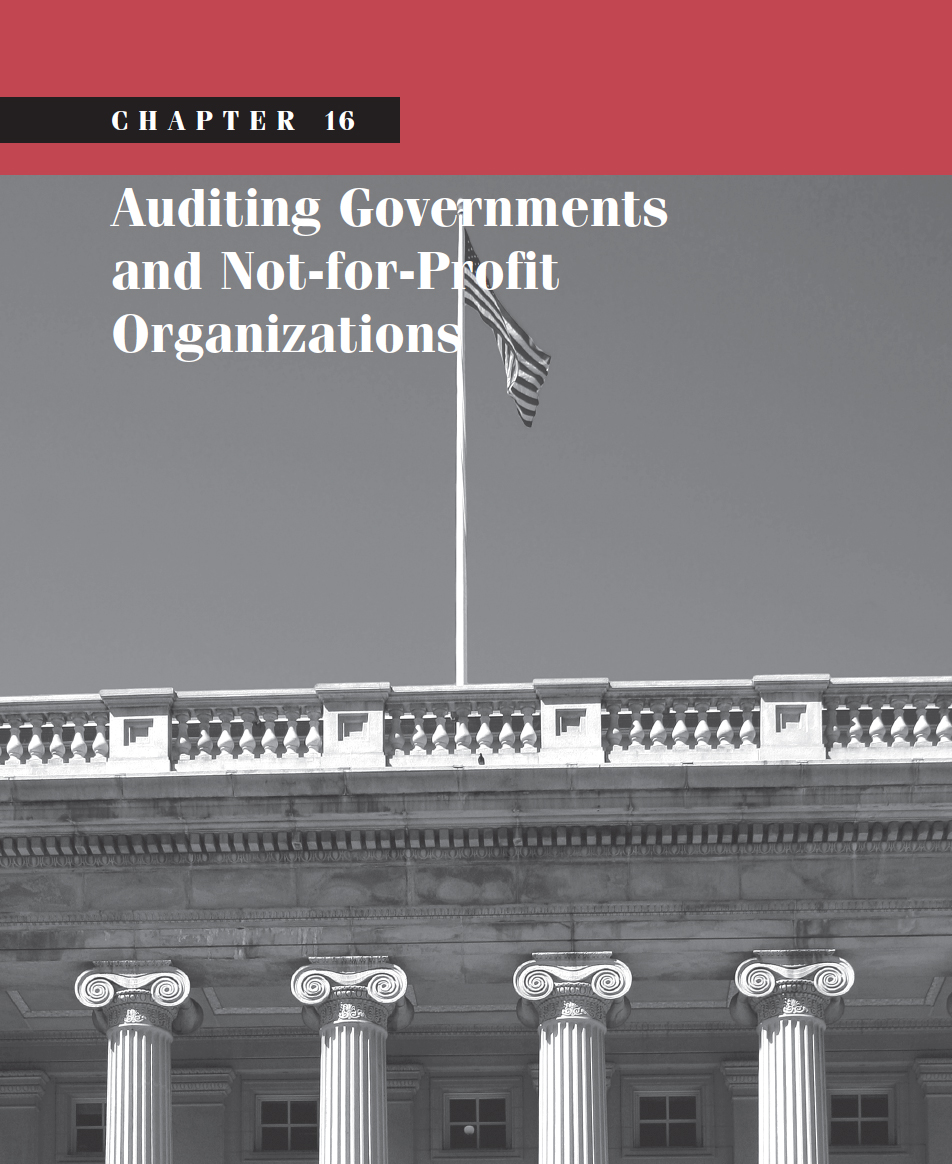
LEARNING OBJECTIVES
After studying this chapter you should understand:
- The primary differences between auditing in the government and not-for-profit sectors and in the business sector
- How the Yellow Book has influenced governmental and not-for-profit auditing
- The types of audits that governments conduct
- The standards to which government audits must comply
- How the Single Audit Act and supporting regulations have influenced auditing
- The reports that auditors must prepare as part of a single audit
- The unique characteristics of performance audits
- The key elements of performance audits
- The unique ethical issues facing governmental and not-for-profit accountants and auditors
The theme of the previous chapter is that government and not-for-profit organizations must be managed to achieve their objectives. By extension, therefore, their performance must also be evaluated as to whether they achieved these objectives. In this chapter we consider how governments and not-for-profit organizations are audited—how their accomplishments are attested to and reported upon.
Whereas in the development of financial auditing standards and practices the independent public accounting profession has played the leadership role, in the areas of reporting on compliance and assessing performance, the government and not-for-profit sectors have been at the forefront of progress. The advances in compliance ...
Get Government and Not For Profit Accounting: Concepts and Practices, 6th Edition now with the O’Reilly learning platform.
O’Reilly members experience books, live events, courses curated by job role, and more from O’Reilly and nearly 200 top publishers.

